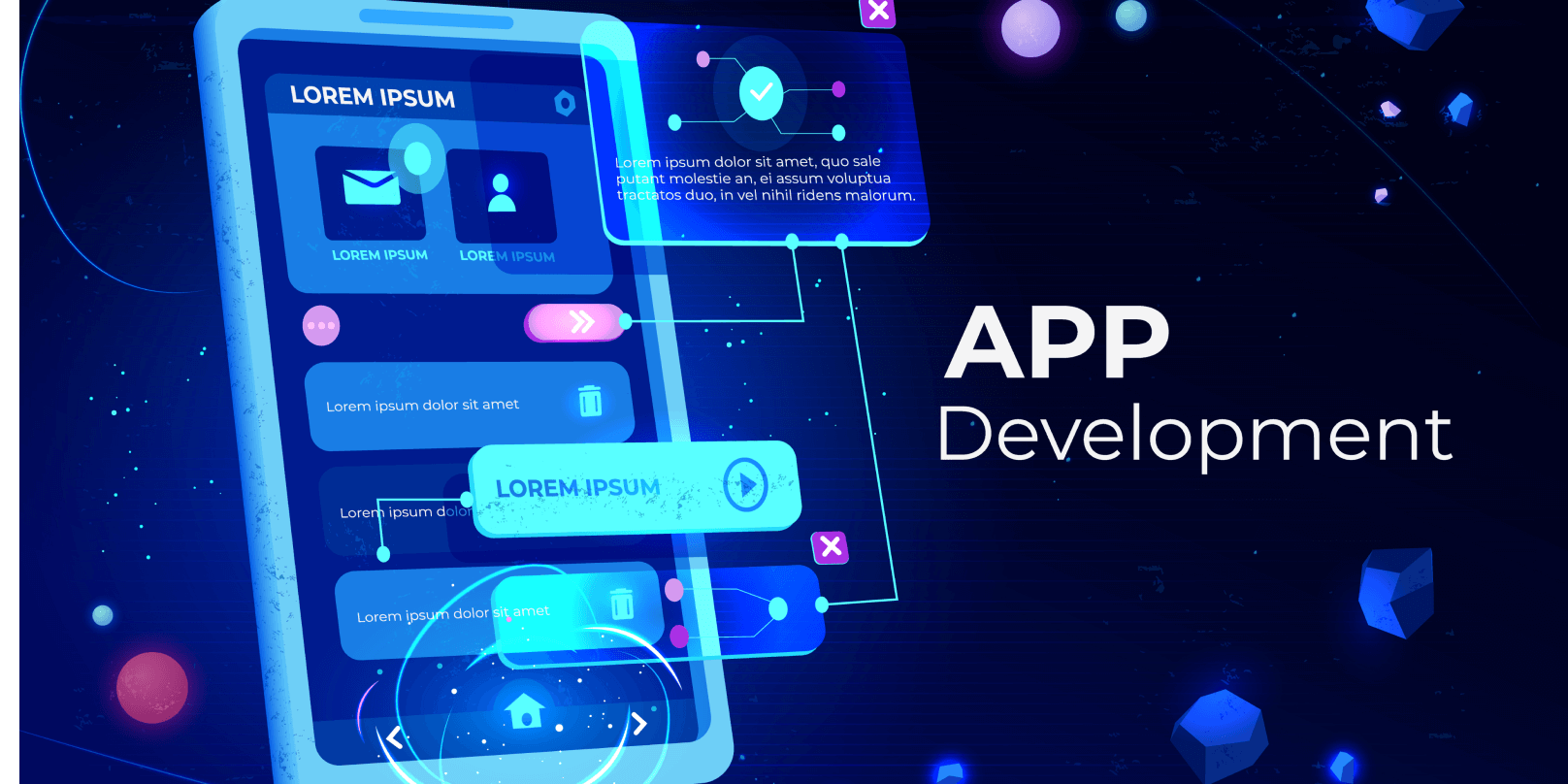With the multitude of devices and operating systems in the market, it has become crucial for developers to induct and follow the best mobile app development standards to guarantee their app works seamlessly across different platforms. In today’s rapidly changing digital environment, guaranteeing cross-platform compatibility is of utmost importance, and one key factor in achieving this is effective mobile testing. This is where a mobile testing lab comes into play.
A mobile testing lab is a specialized technological environment equipped with various devices, simulators, and tools to comprehensively test an app’s functionality, performance, and user experience on different platforms. This article will explore the best mobile app development standards for cross-platform compatibility. But before that, let us briefly understand cross-platform mobile application development.
What is Cross-Platform Mobile Application Development?
While native development counts on programming languages and tools designed specifically for one platform, such as Swift and Objective-C for iOS apps and Kotlin and Java for Android solutions, cross-platform mobile application development strives to develop a single application that operates identically on both platforms.
Cross-platform mobile application development is a type of software that has the competence to run on various computing platforms, such as Android, Windows, Blackberry, iOS, etc. The applications created on this framework don’t need separate coding for each platform. Instead, writing the code once will create the base for the application to run efficiently on all platforms. At present, this is a popular method in the application development domain, which most of the top mobile application development services organizations swear upon.
To code cross-platform mobile application software, developers employ platform-agnostic technologies, such as C#, Dart, and JavaScript, for near-native cross-platform application development and HTML, CSS, and JavaScript for hybrid development. Devices and operating systems do not inherently support these languages. After that, the code is packaged in native containers that can efficiently communicate with iOS and Android systems. This is achieved with the help of popular frameworks for creating mobile apps.
Hybrid and near-native applications can have a nearly native look and feel because of the combination of independent and native code suited for multiple platforms. Developers can write the code for the app logic once and subsequently reuse it, resulting in the ability to expedite product releases.
Maximizing Efficiency: Discover the Range of Mobile Apps Possible with Cross-Platform Frameworks
You can employ a cross-platform mobile app development framework to develop an extensive range of mobile apps that access data from various sources, connect to numerous core systems, and conduct like native applications. Here are a few instances:
- Business applications with user authentication, data management, integration with existing systems, and real-time updates
- Social networking applications with user profiles, messaging, news feeds, friend connections, push notifications, and photo and video sharing
- E-commerce apps that integrate payment gateways, shopping carts, product catalogs, and personalized recommendations
- News and media apps that furnish up-to-date content, videos, articles, and live streaming with features like personalized news feeds, offline reading, social sharing, and push notifications for breaking news
- Travel and booking applications that furnish real-time information, location-based services, booking confirmations, reviews, and ratings
- Educational applications that include multimedia content, progress tracking, social learning features, and interactive lessons
- Health and fitness applications incorporating wearable devices provide personalized advice and progress tracking.
Types of Cross-Platform Mobile Application Development Frameworks
Cross-platform mobile app development frameworks can be classified based on the underlying technology they employ or their method of cross-platform mobile application development. Here are three common types:
JavaScript-Based Application Development Frameworks
JavaScript-based application development frameworks provide a balance between code reusability and native performance. Developers can create their applications in JavaScript to execute across various platforms, and the framework utilizes a native rendering engine to accomplish native performance.
Hybrid Application Development Frameworks
Hybrid application development frameworks permit developers to create mobile applications utilizing web technologies such as HTML, JavaScript, and CSS. These frameworks employ a native container that efficiently renders web content, boosting the seamless execution of applications across multiple platforms. They wrap the web application in a native shell to access device features, furnishing a native-like experience.
Compiled Application Development Frameworks
Compiled application development frameworks furnish high-performance applications with a native feel and look. They utilize a shared codebase, compiled into native code specified to each platform. This directs to enhanced performance and user experiences that closely resemble native applications.
The Best Mobile App Development Standards For Cross-Platform Compatibility
Cross-platform mobile application development plays a significant role in its contemporary popularity. With the development in its outreach, various cross-platform application development tools and frameworks began to float in the market. Here are a few of the best mobile app development standards for cross-platform compatibility:
Implementing Industry Best Practices for Cross-Platform Compatibility
To ensure seamless user experiences across multiple platforms, mobile app developers must execute industry best practices for cross-platform compatibility. By adhering to these standards, developers can minimize potential issues and optimize app performance across diverse operating systems and devices. One pivotal aspect is utilizing responsive design techniques to ensure the app dynamically adapts to different screen sizes and resolutions.
Besides, leveraging platform-agnostic frameworks and libraries can facilitate code sharing and streamline development efforts. Thorough testing on different platforms is also imperative to identify and address compatibility issues early on.
Utilizing Responsive Design for Seamless Functionality on All Devices
Responsive design has become a fundamental component of modern mobile app development, authorizing seamless functionality across all devices. By adopting responsive design principles, developers can guarantee that their apps adapt fluidly to various screen sizes, orientations, and resolutions. This enhances the user experience and eradicates the need for separate app versions for different devices, saving time and resources.
With responsive design, the layout and content of the app automatically adjust to fit the screen, guaranteeing that users can efficiently navigate and interact with the app regardless of the device they are utilizing. This method guarantees a seamless user experience and optimal functionality across various devices, such as smartphones, tablets, and smart TVs, boosting consistency and usability.
Prioritizing User Experience for Maximum Engagement and Retention
To optimize engagement and retention, ensuring a smooth and pleasurable user experience is paramount in mobile app development. By prioritizing user-centric design principles, developers can create both intuitive and aesthetically pleasing applications while also being highly functional. Designing with the end user in mind entangles understanding their needs, preferences, and behavior patterns. This objective can be accomplished through conducting thorough user research, implementing usability testing, and employing iterative design methodologies.
By integrating features such as user-friendly navigation, concise and understandable content, and intuitive interactions, developers can guarantee a seamless and engaging user experience within the application. Furthermore, regular updates and enhancements based on user feedback can keep the app fresh and relevant, encouraging users to continue using it and fostering long-term engagement and retention. Prioritizing user experience enhances customer satisfaction and contributes to the app’s success and longevity in a highly competitive market.
Conducting Comprehensive Testing across Multiple Platforms for Optimal Performance
Conducting thorough testing is essential in mobile app development to ensure optimal performance and compatibility across multiple platforms. Developers employ rigorous testing methods to carefully identify and resolve potential issues or bugs that may occur across various devices and operating systems. This encompasses conducting comprehensive tests to assess the application’s functionality, responsiveness, and usability across various screen sizes, resolutions, and device capabilities.
By emulating real-world usage scenarios and analyzing performance metrics, developers can fine-tune the app to deliver a consistent and seamless user experience. Besides, testing across multiple platforms helps to guarantee that the app meets industry standards and guidelines, offering a high level of reliability and performance. The best way to do it is to rely on cloud testing platforms.
LambdaTest is one such platform that allows you to do comprehensive testing across multiple platforms. It is an AI-powered test orchestration and execution platform to run manual and automated tests at scale. The platform allows you to perform real-time and automation testing across 3000+ environments and real mobile devices.
Adhering to Coding Standards to ensure Compatibility with Various Operating Systems
Adhering to coding standards is vital for cross-platform compatibility in mobile app development. By adhering to established coding practices and guidelines, developers can guarantee the proper structuring of their code to provide compatibility across diverse operating systems. This comprises using standardized naming conventions, organizing code into modular components, and employing efficient algorithms and data structures. Moreover, adhering to coding standards facilitates code reuse, making it easier to maintain and update the app across different platforms.
Incorporating Efficient Code-Sharing Techniques to Save Time and Resources
One highly effective approach to optimizing the efficiency of mobile app development for cross-platform compatibility is to incorporate efficient code-sharing techniques. This approach implicates reusing common code components across different platforms rather than developing separate code bases for each platform. By utilizing frameworks and libraries that support code sharing, developers can streamline the development process, resulting in notable reductions in time and resources.
With a well-designed code-sharing strategy, updates and bug fixes can be implemented consistently across all platforms, guaranteeing a seamless user experience. Besides, efficient code-sharing techniques promote code consistency and maintainability, as changes to the shared code will automatically reflect across all platforms.
The Best Frameworks For Developing Cross-Platform Mobile Apps
Depending on the tool and framework you use, the approach and deliverables of software development can differ. It is essential to select the right framework to develop a native-like application. Here is a list of the best frameworks for cross-platform mobile development:
Ionic
Ionic is a remarkable and widespread cross-platform application framework based on AngularJS. It permits developers to use a variety of top programming languages, such as JavaScript, CSS, HTML5, Cordova wrapper, etc., to access native platform controllers.
Ionic facilitates developers in building an exquisitely creative user interface by adding user-friendly features to the application. It is based on a SAAS user interface framework explicitly developed for mobile OS. It delivers numerous UI components for creating robust applications.
React Native
React Native is built on JavaScript. The framework is employed to write code and deliver a native-like feel to mobile apps that perform on Android and iOS. The remarkable features of React Native make it a preferred choice for developers and businesses. React Native incorporates the benefits of React.JS and JavaScript while permitting the developers to write modules in Swift, Objective-C, or Java languages.
Flutter
Introduced in 2017, Flutter is a software development kit developed to assist in expeditious iOS and Android app development. Flutter furnishes a comprehensive solution for developing applications that operate seamlessly across multiple platforms while ensuring consistency and adaptability. It facilitates portable GPU, which renders user interface power, permitting it to perform on the latest interfaces.
Conclusion
Without considering these aspects, it is difficult to determine the framework or tool for cross-platform mobile development that will meet your explicit needs. Carefully examine the application requirements for your future projects and evaluate them compared to the capabilities offered by different frameworks. Doing this will permit you to find a suitable cross-platform solution to assist you in delivering high-quality applications.





